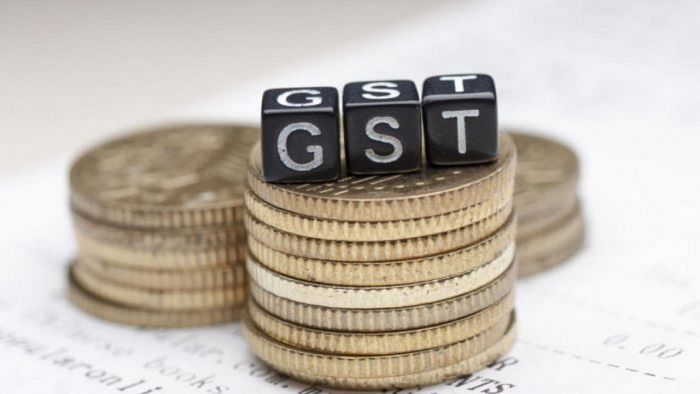
The Government of India claimed achieving the highest monthly collection of gross GST of Rs 1,87,035 crore in April 2023, which was higher than the collections of Rs 1,67,540 crore in April 2022. The year-on-year (YoY) growth, however, was quite muted. Absolute collections grew by Rs 19,495 crore, whereas the GST collections had increased by Rs 27,833 crore in April 2022. Growth at 11.64 per cent was also lower than 19.92 per cent in April 2022.
Also, the CGST and the SGST constituents of the GST did record a healthy growth.
The CGST at Rs 38,440 crore in April 2023 was higher than the Rs 33,159 crore in April 2022 (by 15.93 per cent) and Rs 29,546 crore in March 2023 (by 30.10 per cent). Likewise, the SGST at Rs 47,412 crore was higher than Rs 41,793 crore in April 2022 (by 13.44 per cent) and Rs 37,314 crore in March 2023 (by 27.06 per cent).
Falling in IGST (imports)
There was, however, notable slowdown in the IGST collections.
At Rs 89,158 crore, the IGST was higher by only 8.81 per cent over collections of Rs 81,939 crore in April 2022, and 7.54 per cent over collections of Rs 82,907 crore in March 2023.
This sub-par performance was most conspicuously evident in the IGST collections on imports, which at Rs 34,972 crore were actually less, even in absolute numbers, than Rs 36,705 crore in April 2022 and Rs 42,503 crore in March 2023. The April 2023 IGST on imports recorded negative growth of 17.86 per cent over the collections in March 2023.
GST slowdown
The GST growth story played out quite differently in the two halves of 2022-23.
High inflation unleashed by supply disruptions caused by the Russia-Ukraine war and no Covid-19 incidence turned into stellar GST performance in the first half.
The GST collections for the first quarter 2022-23 were Rs 4,53,051 crore, 37.15 per cent higher than the GST collections of the first quarter of 2021-22. The second quarter also recorded an impressive growth of 27.44 per cent. The first half of 2022-23, on a whole, recorded higher GST collections of Rs 2,17,583 crore over the first half 2021-22, resulting in an extraordinary growth of 32.2 per cent.
Slowdown in imports, and the economy in general, started making an impact in the second half, moderating the GST collections significantly.
The GST collections for the third quarter at Rs 4,47,092 crore recorded YoY growth of only 14.22 per cent. The fourth quarter collections of Rs 4,65,621 crore recorded further reduced growth of 11.9 per cent. The second half of 2022-23, on a whole, recorded higher GST growth of barely 13.03 per cent.
The government highlighting a GST growth rate of 22 per cent in 2022-23 is a bit misleading. The quarterly growth rates of 37.15 per cent in the first, 27.44 percent in the second, 14.22 per cent in the third, and 11.90 per cent in the fourth quarter captures the moderating trend vividly and accurately.
Hardly spectacular
The average per month GST collections since 2018-19 has been Rs 97,947 crore (2018-19), Rs 1,01,843 crore (2019-20), Rs 94,734 crore (2020-21), Rs 1,23,608 crore (2021-22), and Rs 1,50,504 crore (2022-23) respectively, yielding volatile annual growth rates of 3.98 per cent, -6.98 per cent, 30.48 per cent, and 21.76 per cent respectively.
Since 2019-20, the GST receipts increased from Rs 12,22,117 crore to Rs 18,06,047 crore in 2022-23, recording a CAGR of 13.9 per cent. CAGR of the GST performance in four years since 2018-19 is lower at 11.34 per cent.
Nominal GDP grew from Rs 2,00,74,855 crore in 2019-20 to Rs 2,73,07,752 in 2022-23, recording a CAGR of 10.8 per cent. The real GDP grew at a CAGR of 2.78 per cent only.
The gross GST collections growth of 13.9 per cent and nominal GDP growth of 10.8 per cent yields a buoyancy of 1.29. This is not extraordinary.
The GST buoyancy gets further diluted if the effect of extraordinary increase in imports during 2022-23 is accounted for.
The gross GST minus the IGST on imports of Rs 4,66,565 crore in 2022-23 was Rs 13,39,482 crore. The gross GST minus the IGST on imports of Rs 2,67,276 crore in 2019-20 was Rs 9,54,841 crore. A CAGR of GST minus import IGST turns out to be only 11.94 per cent, bringing down the buoyancy to only 1.11. This is hardly any spectacular performance.
Tough Times Ahead
Two factors — high inflation and high imports during 2021-22 and 2022-23 — which explained almost the entire increase in gross GST have reversed the gear by now.
Cooling wholesale inflation is bringing down corporate turnover growth in the last five quarters. This will slow down the overall GST growth. Imports declined in absolute numbers in March 2023. A decline in the IGST on imports will become more pronounced now.
Expect barely a low double-digit growth in gross GST in 2023-24. There is a serious possibility of the GST growth falling into single digit if the real GDP growth does not pick up steam and remains lacklustre.
(Subhash Chandra Garg is former Finance & Economic Affairs Secretary, and author of ‘The Ten Trillion Dream’ and ‘Explanation and Commentary on Budget 2023-24’.)
Disclaimer: The views expressed above are the author's own. They do not necessarily reflect the views of DH.